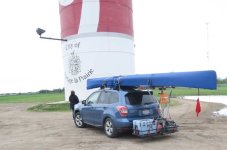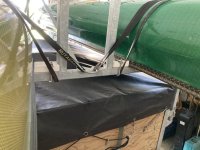- Joined
- Aug 10, 2018
- Messages
- 2,019
- Reaction score
- 3,282
I recently repaired a sit-on-top 'yak for my Dr. because he'd lost it off his truck & it hit pavement around 30 mph (split it like a pumpkin about 10 inches long). I lent him my tandem sawyer to fish from during repairs and he happened to lift my Raven which is considerably lighter than his 'yak. (I've yet to christen it so there was no way he was taking that) We may soon have another convert... maybe some boats are better left loose in the truck bed. 


